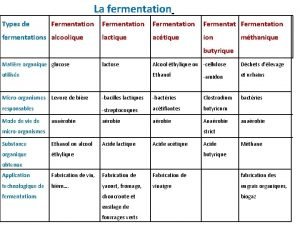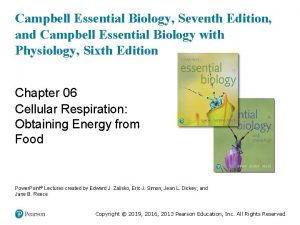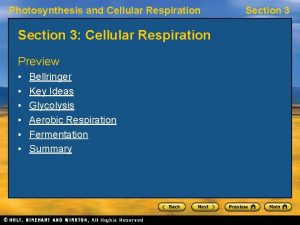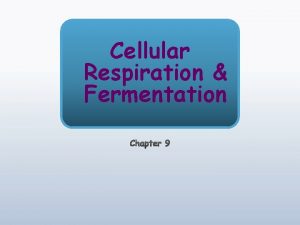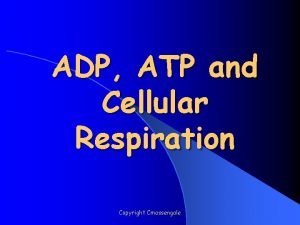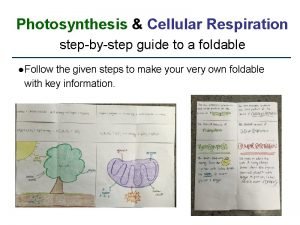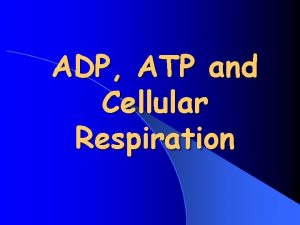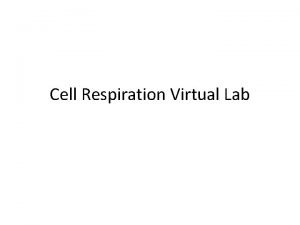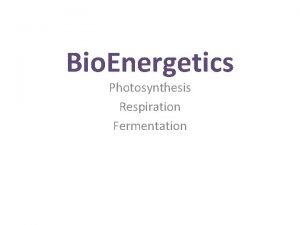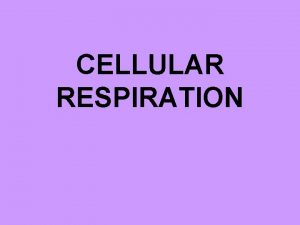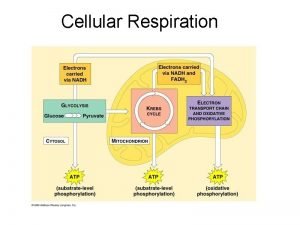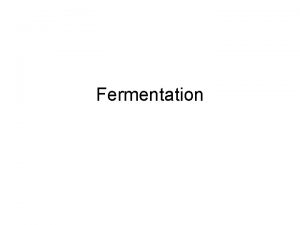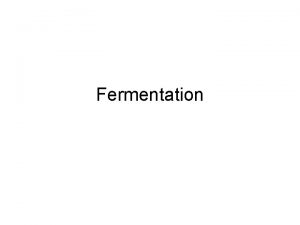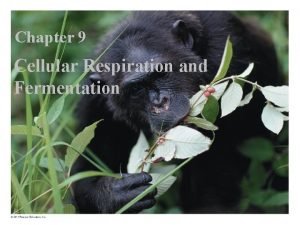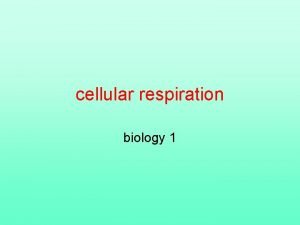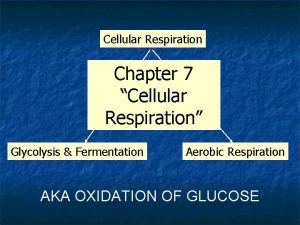Cellular Respiration Part 5 Fermentation Pages Fermentation is
















- Slides: 16

Cellular Respiration Part 5 Fermentation – Pages

Fermentation is an anaerobic alternative to cellular respiration • Most cellular respiration requires O 2 to produce ATP • Glycolysis can produce ATP with or without O 2 (in aerobic or anaerobic conditions) • In the absence of O 2, glycolysis couples with fermentation or anaerobic respiration to produce ATP

Fermentation • Fermentation consists of glycolysis plus reactions that regenerate NAD+, which can be reused by glycolysis • Two common types are alcohol fermentation and lactic acid fermentation

Fig. 9 -18 a 2 ADP + 2 P i Glucose 2 ATP Glycolysis 2 Pyruvatek 2 NAD+ 2 Ethanol (a) Alcohol fermentation 2 NADH + 2 H+ 2 CO 2 2 Acetaldehyde

Alcoholic Fermentation • In alcohol fermentation, pyruvate is converted to ethanol in two steps, with the first releasing CO 2 • Alcohol fermentation by yeast is used in brewing, winemaking, and baking

Fig. 9 -18 b 2 ADP + 2 P i Glucose 2 ATP Glycolysis 2 NAD+ 2 Lactate (b) Lactic acid fermentation 2 NADH + 2 H+ 2 Pyruvate

Lactic Acid Fermentation • In lactic acid fermentation, pyruvate is reduced to NADH, forming lactate as an end product, with no release of CO 2 • Lactic acid fermentation by some fungi and bacteria is used to make cheese and yogurt • Human muscle cells use lactic acid fermentation to generate ATP when O 2 is scarce

Lactic Acid vs. Alcoholic • Both ▫ Recycle NAD+ to allow glycolysis to continue ▫ Anaerobic • Lactic Acid ▫ Animals and bacteria ▫ Produces lactate • Alcoholic ▫ Yeast and some plants ▫ Produces alcohol and CO 2

Anaerobic vs Aerobic • Both processes use glycolysis to oxidize glucose and other organic fuels to pyruvate • The processes have different final electron acceptors: an organic molecule (such as pyruvate or acetaldehyde) in fermentation and O 2 in cellular respiration • Cellular respiration produces 38 ATP per glucose molecule; fermentation produces 2 ATP per glucose molecule

Obligate Anaerobe vs. Facultative Anaerobe • Obligate anaerobes carry out fermentation or anaerobic respiration and cannot survive in the presence of O 2 • Yeast and many bacteria are facultative anaerobes, meaning that they can survive using either fermentation or cellular respiration • In a facultative anaerobe, pyruvate is a fork in the metabolic road that leads to two alternative catabolic routes

Fig. 9 -19 Glucose CYTOSOL Glycolysis Pyruvate No O 2 present: Fermentation O 2 present: Aerobic cellular respiration MITOCHONDRION Ethanol or lactate Acetyl Co. A Citric acid cycle

Cells can use many different organic molecules for energy… • We can obtain energy from various organic molecules • Glycolysis works with many different carbohydrates • Proteins must be digested to amino acids then they can enter cellular respiration • Fats can be broken down into glycerol and fatty acids to enter cellular respiration

Fig. 9 -20 Proteins Amino acids Fats Carbohydrates Sugars Glycerol Glycolysis Glucose Glyceraldehyde-3 -P NH 3 Pyruvate Acetyl Co. A Citric acid cycle Oxidative phosphorylation Fatty acids

Food molecules provide raw materials for biosynthesis… • Excess reactants can be used to build proteins, fats, or carbohydrates

Regulation of Cellular Respiration via Feedback Mechanisms • Feedback inhibition is the most common mechanism for control • If ATP concentration begins to drop, respiration speeds up; when there is plenty of ATP, respiration slows down • Control of catabolism is based mainly on regulating the activity of enzymes at strategic points in the catabolic pathway Copyright © 2008 Pearson Education, Inc. , publishing as Pearson Benjamin Cummings

Fig. 9 -21 Glucose Glycolysis Fructose-6 -phosphate – AMP Stimulates + Phosphofructokinase – Fructose-1, 6 -bisphosphate Inhibits Pyruvate ATP Citrate Acetyl Co. A Citric acid cycle Oxidative phosphorylatio n
 Printed pages vs web pages
Printed pages vs web pages Types de fermentation
Types de fermentation Energy flow in cellular respiration
Energy flow in cellular respiration Section 3 cellular respiration
Section 3 cellular respiration Word equation for photosynthesis
Word equation for photosynthesis Cellular respiration
Cellular respiration Cellular respiration redox
Cellular respiration redox Electron carriers in cellular respiration
Electron carriers in cellular respiration Cellular respiration foldable ap biology
Cellular respiration foldable ap biology Cellular respiration equation
Cellular respiration equation Snails and elodea virtual lab
Snails and elodea virtual lab Difference between autotrophs and heterotrophs
Difference between autotrophs and heterotrophs All cells must contain
All cells must contain What happens during glycolysis
What happens during glycolysis Chapter 9: cellular respiration: harvesting chemical energy
Chapter 9: cellular respiration: harvesting chemical energy Where does cellular respiration take place
Where does cellular respiration take place The process of cellular respiration occurs in *
The process of cellular respiration occurs in *

